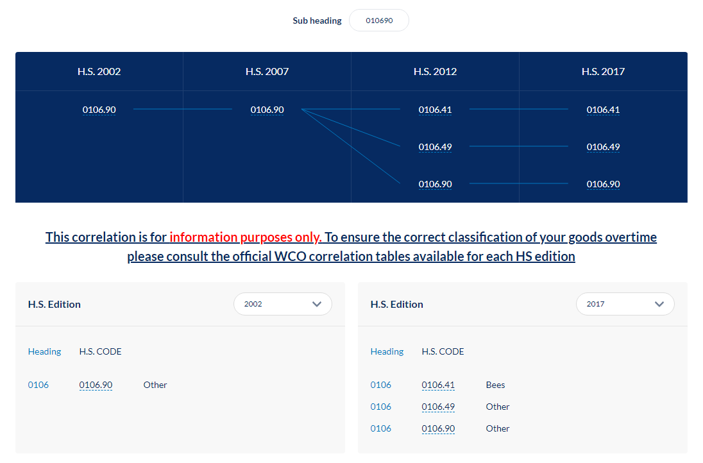Every five years, when a new edition of the HS is published, certain subheadings evolve. The History tool allows us to identify these evolutions.
In order to take into account the technological and societal evolutions of world trade, the HS is revised every five years, thus avoiding difficulties and litigations concerning the codification of goods. On the one hand, products that are no longer widely traded are removed from the HS, such as gramophones, while on the other hand new headings or subheadings are created for new products that do not fit into the current structure of the Nomenclature. Since the 1970s, the Nomenclature has become the universal language of tariff classification. It has remained relevant over the decades due to its evolving structure and versatile nature as a framework for international trade.
Necessary but possibly confusing for professionals using an edition of the Nomenclature for 5 years, the History tool available on WCO Trade Tools allows to trace its evolutions. Available on the last four editions of the HS (2002, 2007, 2012, 2017), the History tool highlights the alterations made on a subheading over the editions.
To access this tool on the platform, open any subheading of the Nomenclature and click on the three small dots under the comparison button. The window that opens gives access to History, pictured by a pair of binoculars. After clicking on it, fill in the subheading and select the editions that interest you. The screen shows the evolution of this sub-position in the intervals of the previously selected editions. For example: 0106.90

To use this tool, you must have a subscription to the Harmonized System. If you wish to benefit from the History, we invite you to purchase access to the HS via the WCO sales platform: www.wcoomdpublications.org


